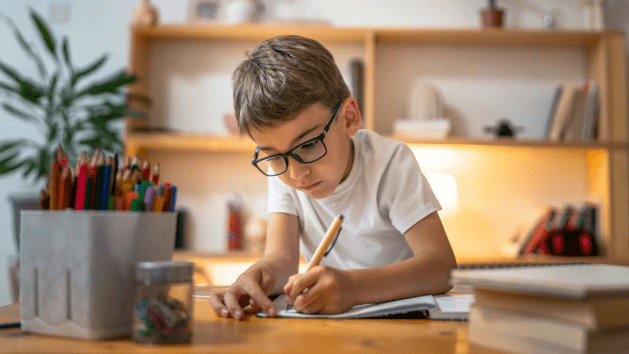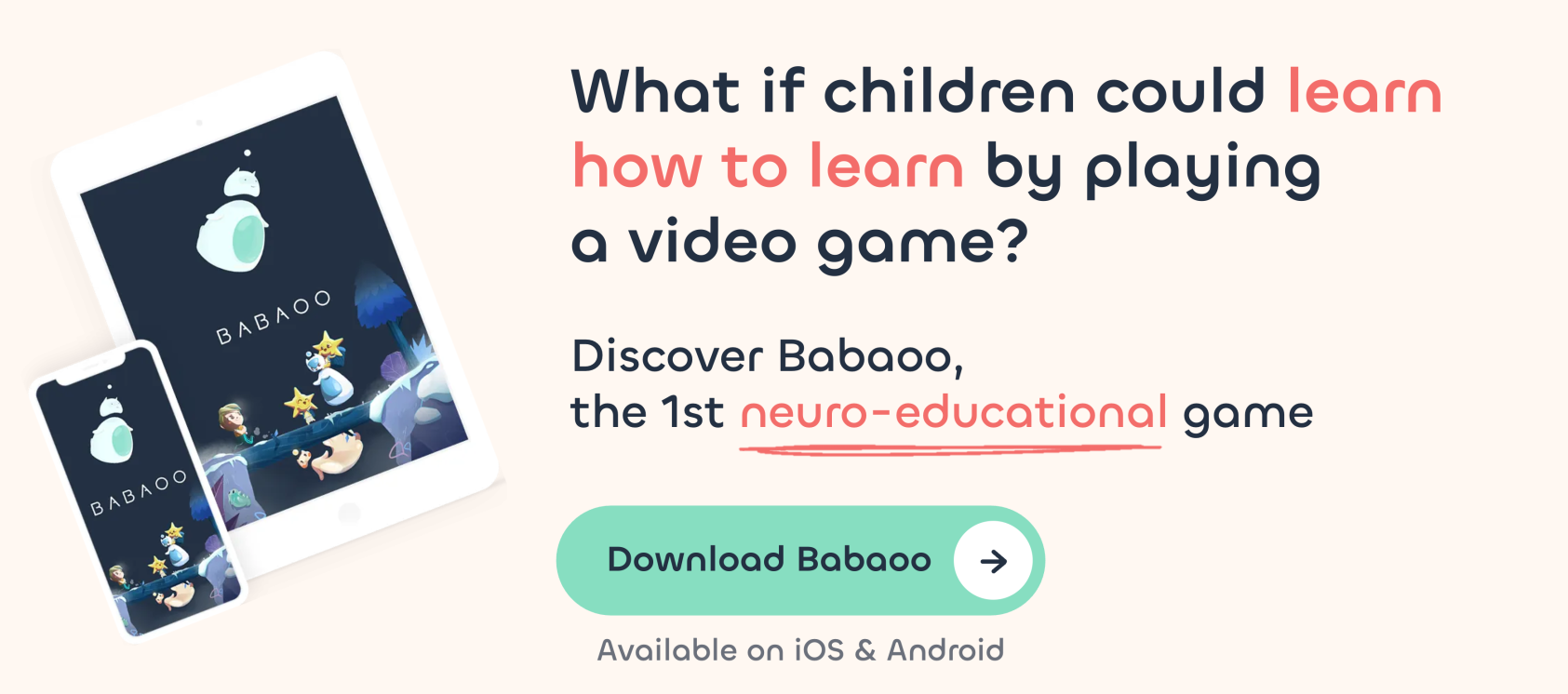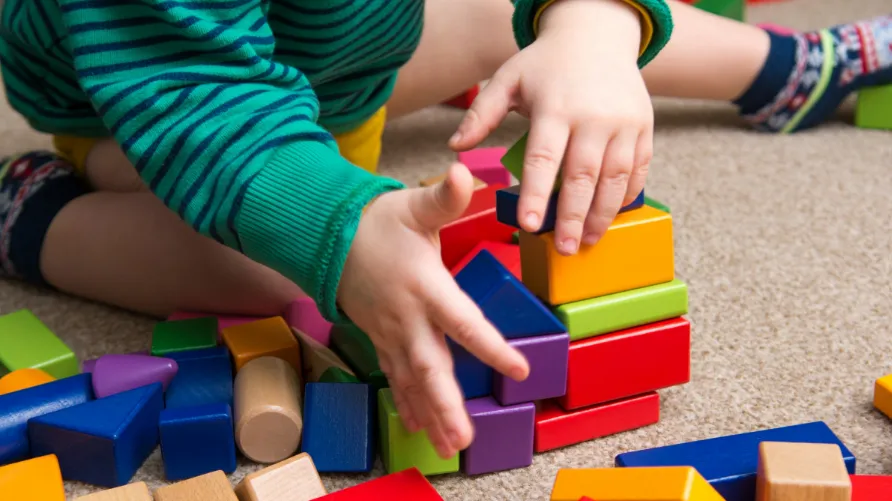
When words dance on paper: dysgraphia explained

Dysgraphia: what are we talking about?
Dysgraphia is a neurodevelopmental disorder characterized by difficulties with the writing gesture. ✍️ More precisely, this specific learning disorder results in distortions or errors in handwriting. In children, the disorder generally appears when they start writing. They make letters of inappropriate size and spacing, or write incorrect or misspelled words, despite thorough instruction.
How do I know if my child is dysgraphic?
Dysgraphia can usually be spotted from the age of 7 or 8, when children begin to master handwriting. It’s not always easy to identify, but certain signs can tip you off:
- Unreadable or very slow handwriting.
- Inconsistent handwriting, with letters of different shapes and sizes.
- An irregular space between letters or words.
- A poor grip on the pen.
- Rapid fatigue when writing.
- High pen pressure, with pain potentially felt in the hand or forearm.
- An aversion to tasks that require writing.
If these signals catch your attention, it’s advisable to consult a specialist for a precise diagnosis. Teachers and parents are often the first to spot these signs.
Is it a permanent disorder?
Rather, it’s called a “persistent disorder”: this doesn’t mean that your child can’t improve his handwriting, or adopt coping strategies (such as using tools) to enable him to write with greater ease! With the right support and strategies, it’s possible to limit the impact of dysgraphia on daily life and academic success.
💡 Babaoo’Tip
In the case of a massive dysgraphic disorder and/or in connection with a more global motor impairment, we will focus on compensating for the difficulty of the gesture by using adapted tools such as ergonomic pens and writing assistance software; or by arranging the conditions of execution (additional time, adapted tests, etc.).
Is dysgraphia linked to other disorders?
This is often the case. Dysgraphia can be associated with other DYS disorders related to language (dyslexia, dysorthography) or coordination (dyspraxia), a dysexecutive syndrome (delayed development of executive functions) or ADHD. Each disorder has its own challenges, but they can sometimes overlap. That’s why it’s necessary to be accompanied by a healthcare professional, often a doctor, who plays the role of care coordinator.
✏ Note: Dysgraphia is not a reflection of your child’s intellectual abilities. His brain works well but differently, making writing a challenge to overcome. 💪

What impact on schooling?
Although dysgraphia is not linked to a child’s intellectual abilities, it can have significant consequences on his or her school career. Indeed, success at school is intrinsically linked to the skill of “writing”. ✍️
Dysgraphia is not just a writing problem: it can also affect a child’s self-confidence. A dysgraphic child writes more slowly, making it difficult to keep up. Routine tasks such as writing one’s first name or answering a question on the blackboard can become a real challenge. Homework can be extended, as the child is apprehensive about comments on his handwriting. Comments about his “illegible” handwriting or slowness can seriously erode his self-confidence. This difference can make him feel out of step with his peers.
That’s why understanding this disorder is crucial to preventing difficulties at school. Armed with the right support and adjustments, every dysgraphic child has the ability not only to shine at school, but also to flourish and reveal their singular talents. 🌟
How can I make my child’s school environment aware of his or her situation?
Communication is essential. Discuss dysgraphia openly with your child’s teacher. Your child’s teacher needs to show understanding and even apply an adapted assessment grid (additional time, greater tolerance for handwriting quality, use of a computer tool, etc.) so as not to discourage his or her dysgraphic pupil.
Who to consult for dysgraphia?
The first, crucial step is to consult a specialist, whether a psychomotrician, neuropsychologist or speech therapist. This helps establish a precise diagnosis and pinpoint the nature and “severity” of the disorder.
- First, the ophthalmologist. 🤓 And yes! Before consulting any other health professional, we start by checking that clumsy handwriting isn’t linked to a visual disorder (astigmatism, myopia, amblyopia, strabismus…) that affects the coordination between eyes and hand!
- The psychomotrician 🦾: when we talk about dysgraphia, this is often the first name that comes to mind. He assesses motor functions as a whole – in the case of dysgraphia: fine motor skills – and suggests tailor-made re-education.
- The speech therapist 💬: while best known for his expertise in oral and written language, the speech therapist is no less valuable for dysgraphia. His or her professional remit includes the assessment and re-education of graphism (gross motor skills will not be tackled in the same depth as with a psychomotrician). Speech therapy can therefore also be considered, as long as you specify that it’s for graphism when making the appointment.
- Ergotherapist 📝: the occupational therapist is a bit like the wizard of adaptation. He adjusts the work environment, suggests clever tools or techniques to make writing easier, and focuses on fine motor skills. He adjusts the environment, puts in place compensations that improve the graphic gesture when possible, and when it’s not to adopt tools in a personalized way (taking into account the patient, his family, the need and the context of use).
- Neuropsychologist 🧠: this professional assesses cognitive functions and can pinpoint the cause of this disorder or other neuropsychological concerns.
- Doctor, neuropediatrician or neuropsychologist 🧑⚕️ : sometimes, we need to dig deeper. If difficulties persist despite an initial series of re-education sessions, and the results of assessments still show difficulties, the question of medical diagnosis arises. To build up a file, you’ll need the assessments of the rehabilitation specialists already consulted (psychomotor therapist, speech therapist, occupational therapist), as well as a psychometric assessment carried out by a trained psychologist or neuropsychologist. Once these elements have been gathered, a doctor (pediatrician, neuropediatrician, general practitioner trained in learning disorders or school doctor) will be consulted.
- Graphotherapist 🖌️: in a targeted way, the graphotherapist’s mission is to specifically re-educate handwriting, letter and word drawing. He or she reintroduces the correct way to hold a pen and the correct posture for writing. It should be noted, however, that graphotherapy is not a regulated profession in France – there is no state diploma. The graphotherapist will therefore potentially intervene if no medical diagnosis has been made.
Accompanying a dysgraphic child
Accompanying a dysgraphic child requires a caring, patient and adapted approach. Here are some recommendations for supporting a child with this disorder:
- Adapted tools: use ergonomic pens or thicker pencils to make them easier to grip. Ask your child what he prefers to write on: introduce him to different media, such as notebooks with large squares or wide lines, which can help him structure his writing.
- Strengthening through psychomotricity: specific exercises help improve hand-eye coordination and manual dexterity.
- School and pedagogical adaptations: with his or her teacher, discuss the pedagogical means to be put in place to enable your child to reveal his or her potential despite his or her difficulties, possible contextual adaptations (additional time, installation, posture, reduction of discomfort triggers in case of identified sensory particularities), and available tools (computer, tablet, adapted software).
- Ongoing dialogue: maintain a regular exchange with your little one’s teacher to monitor progress and identify areas requiring special attention.
- A space conducive to work: set up a peaceful, organized work area for your child, free from distractions, to help him concentrate when writing.
- Valuing and encouraging: more than the perfection of his handwriting, it’s your child’s effort and progress that should be highlighted. Small victories deserve to be celebrated!
- Planning: help your child plan homework and revision, incorporating regular breaks to avoid fatigue.
Supporting a dysgraphic child relies on a combination of professional support, practical adaptations and a caring approach.
The Babaoo recap!
Dysgraphia is a handwriting disorder that impacts a child’s schooling. With the right support and open communication, your child can overcome this challenge and thrive in school. Every child is unique, and dysgraphia is just one facet of their personality. 💪🌈
➡️ Also worth reading: Zoom on written language disorders, how to identify and differentiate them?
You may also be interested in these articles


